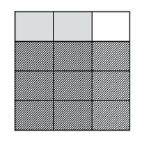Abstract
Mathematics teachers’ content knowledge is an important asset for effective teaching. To enhance this asset, teacher’s knowledge is required to be diagnosed and developed. In this study, we employed problem-posing and problem-solving tasks to diagnose preservice teachers’ understanding of fraction multiplication. We recruited 41 elementary preservice teachers who were taking elementary mathematics methods courses in Korea and the United States and gave the tasks in their final exam. The collected data was analyzed in terms of interpreting, understanding, model, and representing of fraction multiplication. The results of the study show that preservice teachers tended to interpret (fraction)×(fraction) more correctly than (whole number)×(fraction). Especially, all US preservice teachers reversed the meanings of the fraction multiplier as well as the whole number multiplicand. In addition, preservice teachers frequently used ‘part of part’ for posing problems and solving posed problems for (fraction)×(fraction) problems. While preservice teachers preferred to a area model to solve (fraction)×(fraction) problems, many Korean preservice teachers selected a length model for (whole number)×(fraction). Lastly, preservice teachers showed their ability to make a conceptual connection between their models and the process of fraction multiplication. This study provided specific implications for preservice teacher education in relation to the meaning of fraction multiplication, visual representations, and the purposes of using representations.
Figures & Tables

Figure 1. Intersecting part (Yim, 2012, p. 139).
